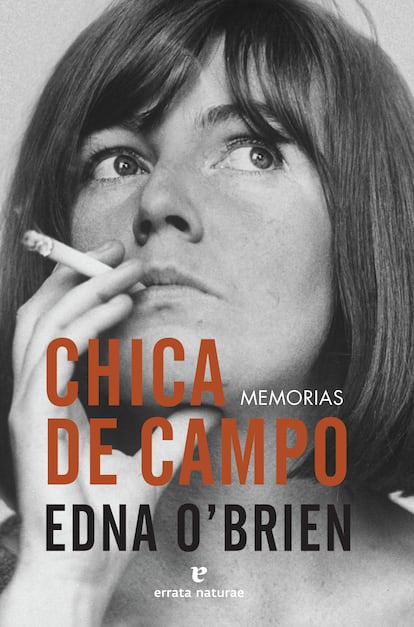On July 27, novelist Edna O’Brien died at the age of 93. Born in the late 1930s in the village of Tuamgraney (County Clare), she lived most of her life in London. She soon fled her country. “If you find your roots too threatening, too sharp,” she confessed to Philip Roth, “you have to leave.” But the Ireland of her childhood and youth was always at the core of her work. According to José María Guelbenzu, she has been “the best Irish writer of our time.”
In his memoirs Country girl, She described her town as “closed, fervent and intolerant”. She grew up in a house in the country in a family that had fallen on hard times. “My family was radically opposed to anything that had to do with literature”. Her father drank, and she had a conflictive relationship with her mother. When she could, the young woman moved to Dublin, where she worked as a pharmacist. It was there that her vocation began to take shape. In the mid-1950s she met the novelist Ernest Gébler, whom she married, they had two children and they moved to London.
In the anthology Introducing James Joyce, prepared by TS Eliot, read a fragment of the Portrait of the artist as a teenager who showed her how literature could be a space for exploring family trauma. She began writing reading reports for Hutchinson and the publishers saw so much potential in her that they commissioned a novel for which they paid her 25 pounds. In 1960, the book was published. The country girlsthe first installment of the sentimental education of Kate and Baba. This work launched her to literary fame in English literature and, at the same time, her husband did not forgive her success and she became suspect in the repressed Catholic morality that was dominant in her country. The censorship board of her country banned it, but it was difficult to prevent its reading. It was the Jezebel of Ireland. In a session at a church that she attended, and in which she suffered a kind of act of faith, the priest asked the parishioners to raise their hands if they had read it. The raised arms were the majority.
The young woman, raised in a village without culture and in a family that hated literature, began to internalize the classics, from the Russians to Proust and the Brontës. With this baggage, now in its fullness, she could make an assessment of what her experience as a woman writer had been. “I have represented women in lonely, desperate and often humiliated situations, very often targeted by men and almost always seeking an emotional catharsis that never comes,” she said in that conversation with Philip Roth. “Women are better at emotions and at the ravages that those emotions cause,” she said in one of the legendary interviews in The Paris Review. This is the main territory he explored in his most popular work. Between 1962 and 1964 he published two other novels, The girl with green eyes y Happily married girlswhich would make up the trilogy that he was polishing and that he grouped in the volume The country girls.
O’Brien was a young lady of English letters and, after her divorce, also a beautiful white-skinned red-haired woman who became a regular at the parties of London’s cultural high society. Author of short stories and novels, in the late sixties she wrote the script for the film X, Y & Zeea marital drama starring Michael Caine and Elizabeth Taylor. She invested the money she earned in a house in the elegant Chelsea neighborhood, where she grew tired of giving parties where it was not unusual to see Princess Margaret, Sean Connery or Robert Mitchum, with whom she had a relationship like the one she had with a prominent English politician whose name she never wanted to reveal.
Author of splendid biographical essays on James Joyce and Lord Byron (reissued a few months ago), in her mature work she moved from the personal to the political: she wrote novels about terrorism in her country, meditated on the war criminal Karadzic or even on the sexual violence inflicted by Boko Haram fundamentalists against women. Although her recognition in the United States came early (she published short stories in The New Yorker (since 1962), in Ireland and the United Kingdom it took much longer for her to achieve prestige. She had been suffering from cancer for years. “No writer, male or female, can compare with her, anywhere,” Alice Munro once said.

